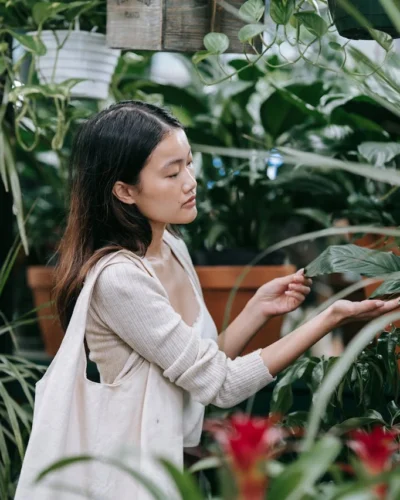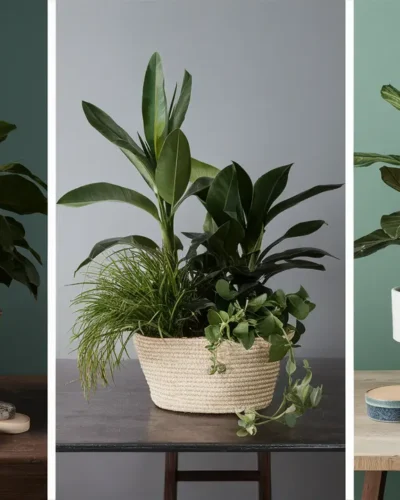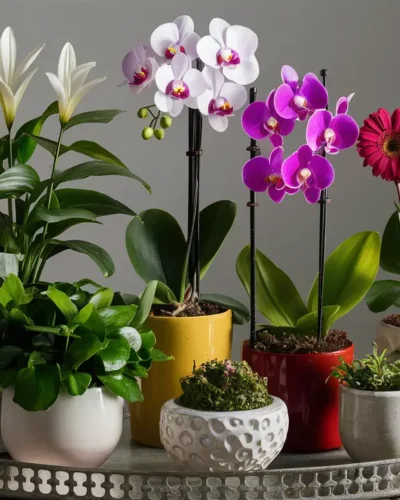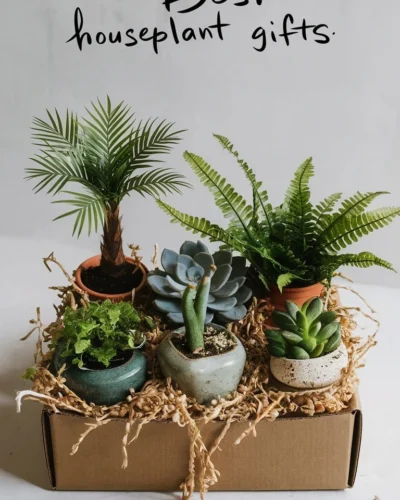Welcome, fellow plant parents! We’ve all been there – the dreaded sight of tiny, flying insects buzzing around our beloved houseplants. These little nuisances, known as houseplant gnats, can quickly turn your green oasis into a buzzing nightmare. But fret not! This guide will equip you with the knowledge to identify, combat, and ultimately conquer these pesky pests. We’ll delve into the ins and outs of houseplant gnats, from their origins to effective control methods, so you can reclaim your plant haven.
Table of Contents
- Identifying the Enemy: Recognizing Houseplant Gnats
- Understanding the Source: Where Do Houseplant Gnats Come From?
- Prevention is Key: Keeping Gnats at Bay
- Battling the Bugs: Effective Control Methods
- Living in Harmony: Maintaining a Gnat-Free Home
Identifying the Enemy: Recognizing Houseplant Gnats
Let’s face it, gnats can be mistaken for other flying insects, but there are some telltale signs to look out for. These tiny, black flies, often called fungus gnats, are typically less than 1/8 inch long. You might notice them hovering around your plants, or even landing on the soil surface. They are attracted to moisture and are often found in areas with excess water, such as damp potting soil.
One way to differentiate them from other common flying insects is their erratic flight pattern. They tend to dart around erratically, almost like they’re unsure of their direction. Their presence is often accompanied by tiny, black larvae wriggling in the soil. These larvae are the real culprits behind the damage they cause.
Look for these clues to confirm if you’re dealing with houseplant gnats:
- Flying insects: Small, dark flies hovering around your plants.
- Erratic flight pattern: Gnats dart around haphazardly.
- Larvae in soil: Tiny white or clear worm-like creatures in the potting mix.
- Yellowing or wilting plants: Gnats can damage roots, leading to poor plant health.
If you spot any of these signs, you might be dealing with a houseplant gnat infestation. Don’t panic! We’ll explore how to banish these unwelcome guests in the next section.
Understanding the Source: Where Do Houseplant Gnats Come From?
Houseplant gnats, also known as fungus gnats, are tiny, black flies that are commonly found around houseplants. These pesky insects are attracted to moist soil, making them a common problem for plant enthusiasts. So where do these gnats come from?
The culprit is often the soil itself. Houseplant gnats lay their eggs in moist soil, and the larvae feed on decaying organic matter found in the soil. This means that overwatering, using contaminated potting mix, or having too much organic matter in the soil can all contribute to a gnat infestation.
Here are a few common culprits:
- Overwatering: Excessive watering creates a damp environment that gnats thrive in.
- Poor Drainage: If the soil is not draining properly, it can stay too moist for extended periods, encouraging gnat activity.
- Contaminated Soil: Gnats can be introduced via contaminated potting mix, so using sterile soil is important.
- Organic Matter: The organic matter in your potting mix can attract gnats, especially if it’s not properly composted.
Prevention is Key: Keeping Gnats at Bay
The best way to deal with houseplant gnats is to prevent them in the first place. Here are some preventive measures you can take:
- Water Wisely: Water your plants only when the top inch of soil is dry. Avoid overwatering, and make sure the pots have good drainage to prevent soggy soil.
- Use Sterile Potting Mix: Always use a clean, sterile potting mix. Avoid using soil that is contaminated with fungus gnat eggs.
- Preventative Measures: You can also deter gnats by sprinkling a thin layer of sand or gravel on the top of the soil. This can help to dry out the top layer and discourage gnats from laying their eggs.
Battling the Bugs: Effective Control Methods
If you’re dealing with a gnat infestation, there are a few effective control methods that can help:
- Yellow Sticky Traps: These traps attract and trap adult gnats, reducing their population.
- Neem Oil: This natural oil can be diluted in water and sprayed on plants to kill gnats and their larvae.
- Diatomaceous Earth: This powdered form of fossilized algae can be sprinkled on the soil surface to dehydrate and kill the gnats.
- Mosquito Dunks: These floating tablets can be placed in the water tray of your plants to eliminate larvae.
Remember: While you are battling gnats, it’s important to avoid overwatering your plants, as this can only worsen the infestation.
Living in Harmony: Maintaining a Gnat-Free Home
By following these tips, you can prevent gnats from invading your home and enjoy a healthy and thriving collection of houseplants. Maintaining a gnat-free home is a continuous process. Be vigilant and make sure you are taking the necessary steps to keep these pesky insects at bay.
For example, consider adding a spider lily, also known as an Amazon lily to your collection. This beautiful, low light plant can tolerate neglect and is known to be resistant to pests. If you are looking for a low light house plant that adds a touch of elegance with its pink flowers, this plant is a great choice.
Remember, consistency is key. Regularly check your plants for signs of gnat activity and don’t hesitate to implement control measures if needed.
Identifying the Enemy: Recognizing Houseplant Gnats
Those tiny, annoying flies buzzing around your beloved houseplants? Chances are, you’re dealing with houseplant gnats. These tiny, black flies, often called fungus gnats, are a common nuisance for indoor plant enthusiasts. They are usually just a few millimeters long with long legs and are often confused with fruit flies.
Understanding the Source: Where Do Houseplant Gnats Come From?
Houseplant gnats are attracted to moist soil and decaying organic matter. They lay their eggs in the soil, and when the eggs hatch, the larvae feed on the decaying roots and organic matter. Overwatering is a common cause of gnat infestations, as it creates a humid environment ideal for gnats to thrive.
Prevention is Key: Keeping Gnats at Bay
The best way to deal with gnats is to prevent them from becoming a problem in the first place. Here are a few tips for keeping gnats at bay:
- Water your plants sparingly: Allow the top inch of soil to dry out between waterings. This will help to prevent the soil from becoming too moist.
- Use well-draining potting mix: A well-draining potting mix will help to prevent water from accumulating in the soil.
- Avoid over-fertilizing: Too much fertilizer can lead to excess moisture and organic matter in the soil.
- Remove any dead leaves or debris: Decaying leaves and debris provide a breeding ground for gnats.
- Consider using a gnat-repelling plant: Certain plants, like Find out how amazing and strong ZZ plants are can help to deter gnats.
Battling the Bugs: Effective Control Methods

If you already have a gnat infestation, don’t despair! There are a few effective methods for controlling these pesky pests.
- Yellow sticky traps: These traps are a simple and effective way to catch gnats. The yellow color attracts the gnats, and the sticky surface traps them.
- Neem oil: Neem oil is a natural insecticide that is effective against gnats. Simply mix a few drops of neem oil with water and spray the affected plants.
Diatomaceous earth: Diatomaceous earth is a natural powder made from fossilized diatoms. It works by absorbing the gnats’ moisture, causing them to dehydrate and die.
Hydrogen peroxide: A diluted solution of hydrogen peroxide (3% solution) can be poured onto the soil to kill the gnat larvae.
Mosquito dunks: Mosquito dunks are small, donut-shaped tablets that contain bacteria that kill mosquito larvae. They can also be effective against gnat larvae.
Repotting: Repotting your plant with fresh, well-draining potting mix can help to eliminate the source of the infestation
- Insecticidal soap: Insecticidal soap is a safe and effective way to kill gnats. Simply spray the affected plants with insecticidal soap.
Living in Harmony: Maintaining a Gnat-Free Home
Once you have taken steps to control the gnat infestation, it is important to maintain a clean and healthy environment for your plants to prevent the gnats from returning.
- Regularly check the soil: Monitor the soil moisture levels and only water when the top inch of soil feels dry.
- Remove any dead leaves or debris: Keep the surrounding areas clean and free of decaying organic matter.
- Inspect new plants before bringing them home: Always inspect new plants for gnats before bringing them into your home.
By following these tips, you can enjoy your indoor plants without the annoyance of houseplant gnats.
Battling the Bugs: Effective Control Methods
You’ve identified the pesky houseplant gnats, understood their origins, and implemented preventative measures. Now it’s time to tackle the existing infestation head-on. Fear not, there are effective control methods that can help you reclaim your green haven from these miniature invaders!
1. The Sticky Trap Strategy: These yellow, sticky traps are a simple and effective way to catch adult gnats. The bright yellow color attracts the gnats, and the sticky surface traps them. Place these traps near your plants, especially around the soil surface where gnats are most active.
2. The Natural Predator Approach: Introducing beneficial insects like ladybugs and lacewings can help control gnat populations. These predators naturally feed on gnats, offering a more eco-friendly approach to pest management. However, be cautious about introducing new creatures to your home, especially if you have pets or children.
3. The Powerful Neem Oil Power: Neem oil is a natural insecticide derived from the neem tree. It is effective against a wide range of pests, including gnats. Mix a diluted solution of neem oil with water and apply it to the soil surface and lower leaves of your plants. Neem oil can be a bit harsh, so follow the manufacturer’s instructions carefully.
4. The Drying Out Technique: Gnats thrive in moist environments. One way to combat them is to let the top layer of your plant soil dry out completely between waterings. This can make the soil less hospitable for gnats to lay their eggs and mature.
5. The Insecticidal Soap Solution: Insecticidal soaps are readily available at garden centers and are a safe and effective way to kill gnats. They work by disrupting the cell membrane of insects, leading to their demise. Mix the soap with water according to the manufacturer’s instructions and spray it directly onto the leaves and soil of your plants.
6. The DIY Yellow Sticky Trap: If you can’t find commercially available sticky traps, you can easily make your own. Simply cut a piece of yellow cardboard, coat it with a thin layer of petroleum jelly, and place it near your plants. This DIY option will catch gnats just as effectively as store-bought traps.
7. The Hydrogen Peroxide Treatment: For a more natural approach, try adding a small amount of hydrogen peroxide to your plant’s watering can. This will break down the organic matter in the soil, making it less attractive to gnats.
8. The Diatomaceous Earth Dust: This fine powder, made from fossilized algae, is a natural insecticide. When sprinkled on the soil surface, it cuts through the exoskeletons of gnats, dehydrating and killing them. However, it’s important to wear a mask when applying diatomaceous earth, as it can be irritating to the lungs.
9. The Beneficial Bacteria Boost: Introducing beneficial bacteria to your soil can help reduce gnat populations. These bacteria break down organic matter, leaving less food for gnats to feed on. You can find beneficial bacteria solutions at most garden centers.
10. The Mosquito Dunks Trick: Mosquito dunks are designed to control mosquito larvae in standing water, but they can also be effective against gnat larvae. Place a dunk in a saucer of water and put it near your plants to help control the gnat population.
By combining several of these methods, you can effectively control the gnat infestation and create a healthier environment for your plants. Remember, patience is key! It may take a few weeks to completely eradicate gnats, but with persistence, you can reclaim your green haven and enjoy the beauty of your houseplants once again.
For more tips on creating a safe haven for your pets, check out our article on Pet-Friendly Houseplants. And if you’re interested in learning more about how to make your own Self-Watering Planters, we have a great article on that topic as well.
1. Identifying the Enemy: Recognizing Houseplant Gnats
Houseplant gnats, those tiny, annoying flies that buzz around your beloved greenery, are a common problem for plant enthusiasts. They’re not just a nuisance, but they can also damage your plants by feeding on their roots and spreading diseases.
Identifying the Culprit
- Size and Appearance: Houseplant gnats are small, about 1/8 of an inch long, with dark gray bodies and clear wings.
- Location: They often gather in clusters around the soil surface of your plants, particularly those that are overwatered.
- Larvae: The tell-tale sign of a houseplant gnat infestation is the presence of tiny white or clear worm-like larvae in the soil. You might spot these in the top layer of the soil, particularly if you’re repotting or adjusting your plants.
2. Understanding the Source: Where Do Houseplant Gnats Come From?
Houseplant gnats are attracted to moist, decaying organic matter, which is why they love to hang out in our beloved houseplants.
Common Sources
- Overwatering: Gnats thrive in damp, soggy soil. If you’re a heavy-handed waterer, you’re likely creating a breeding ground for these pests.
- Infested Soil: If you purchase new plants with infested soil, gnats can easily hitch a ride into your home.
- Pet Waste: If you have pets, their waste can attract gnats, especially if it’s not properly cleaned up.
- Compost: Compost piles can be a breeding ground for gnats, so make sure you keep yours far away from your plants.
3. Prevention is Key: Keeping Gnats at Bay
The best way to deal with houseplant gnats is to prevent them from taking hold in the first place.
Prevention Tips
- Water Wisely: Let the top inch of soil dry out between waterings. This will discourage gnats from laying eggs in your plants.
- Don’t Over-fertilize: Excess fertilizer can create a nutrient-rich environment that attracts gnats.
- Inspect New Plants: Before bringing a new plant into your home, carefully examine it for signs of gnats or larvae.
- Yellow Sticky Traps: These traps can help catch adult gnats and monitor the infestation.
4. Battling the Bugs: Effective Control Methods
If you’ve already got a gnat infestation, don’t despair! There are a number of effective control methods you can try.
Control Methods
- Mosquito Dunks: These are readily available at most garden centers and are effective at killing gnat larvae.
- Diatomaceous Earth: This natural, non-toxic powder can help dehydrate and kill gnats.
- Neem Oil: Neem oil is a plant-based insecticide that’s safe for use around houseplants and can help control gnat populations.
- Hydrogen Peroxide: Dilute hydrogen peroxide with water and pour it into the soil to kill larvae and control gnat populations.
- Yellow Sticky Traps: These traps can catch adult gnats and help monitor the infestation.
5. Living in Harmony: Maintaining a Gnat-Free Home
Once you’ve gotten your gnat infestation under control, it’s important to maintain a gnat-free home to prevent future outbreaks.
Keeping Your Home Gnat-Free
- Water Wisely: This is still the most important tip!
- Clean Up Spills and Debris: Gnats are attracted to organic matter, so clean up any food or plant debris promptly.
- Monitor Your Plants: Regularly check your plants for signs of gnat activity.
- Consider Indoor Plants: Some indoor plants, like Find out how amazing and strong ZZ plants are and the ultimate guide to simple ZZ plants care , are known to be more resistant to gnat infestations.
- Create a Safe Haven for Your Pets: If you have pets, consider incorporating pet-friendly houseplants into your home.
Conclusion
Houseplant gnats may be a nuisance, but they don’t have to take over your home. By following these tips, you can keep them at bay and enjoy your beautiful houseplants without worry.







